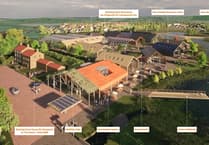IN the Victorian Forest of Dean, pine martens would not have been an unusual sight and a Gloucestershire Wildlife Trust (GWT) and Forestry Commission (FC) project is assessing the possible impacts and benefits of reintroducing this vanished native species.
Andrew Stringer is the project officer deciding whether reintroducing this mammal, about the size of a small cat and related to badgers and weasels, is a good idea.
He’s looking at the habitat available to support a sustainable population, the impact pine martens may have on other wildlife and public opinions and opportunities such as ecotourism that may result.
Andrew told the Review: “We’ve been working on this since last summer and it’s all about making sure we’ve considered the risks as well as the positives.
Where pine martens are reintroduced, we know that grey squirrels can often go into decline, which would be a positive, but we need to look for ‘show-stoppers’, something that could have a big negative effect.
“For instance, we have a lot of rare bats in the area and we know that pine martens can occasionally take them from their roosts. The high density of roads is another factor, as if too many are killed, it could prevent the population from stabilising.
Socio-economic factors are something else we need to consider. For instance these animals can take hens, but if owners are already protecting against foxes and mink, the risk should be low.
“We’ve seen the impact an illegal reintroduction can have. If this kind of feasibility study had been carried out before wild boar were released, the costs may well have been seen to outweigh the benefits.
“By the time greys were introduced in the 1870s, pine martens had already been knocked back by Victorian gamekeepers, but if we can successfully reintroduce pine martens and grey squirrels decline, it’s possible we could even see red squirrels back in the Dean in the future.
“Public opinion is very important. This is a native species, but as well as assessing our area, we’re learning from reintroduction projects in Scotland and Wales. Early indications are positive, but pine martens won’t be released without public support.
“We plan to share the results of the project through events in the autumn and, at the same time, a full independent consultation will take place.”
The pine marten feasibility study is a partnership between GWT, Vincent Wildlife Trust and FC.
To find out more, visit www.gloucestershirewildlifetrust.co.uk/pinemarten




